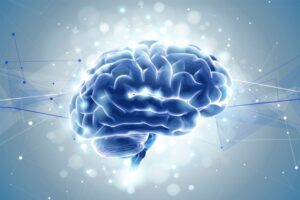What's On This Page?
ToggleEpilepsy is a neurological disorder that affects millions of people worldwide. It occurs when brain activity becomes abnormal, leading to seizures or unusual behavior, sometimes with loss of consciousness. While many patients respond well to antiseizure medications, others have what doctors call treatment-resistant or refractory epilepsy. In the past, that label meant there was little hope for seizure freedom once several medications had failed. New research, however, is rewriting that story.
A long-term study from the Human Epilepsy Project followed adults with focal treatment-resistant epilepsy who had already tried four or more medications. Encouragingly, about two-thirds of participants experienced fewer seizures over time. Even more remarkable, roughly 13% became seizure-free for at least three months, some for six months or longer.
The researchers could not pinpoint one specific drug or device responsible for the improvement, suggesting that steady persistence, lifestyle adjustments, and ongoing medical care can make a real difference. The key message is that hope remains, even for those who have battled seizures for years. Healing in epilepsy doesn’t always look like zero seizures – sometimes it looks like softer landings, fewer injuries, less frequent episodes, or a faster recovery afterward.
10 Triggers for Seizures
If you live with epilepsy, you already know that seizures can feel unpredictable. But the truth is, many people have patterns or “triggers” that quietly set the stage for an episode. Identifying yours can make all the difference. Let’s look at some of the most common triggers, many of which can be managed once you’re aware of them.
1. Sleep deprivation: Not getting enough restorative sleep is one of the strongest and most overlooked seizure triggers. It disrupts brain wave patterns, irritates neurons, and lowers the seizure threshold. Even one late night or several days of poor sleep can raise risk, so aim for consistent, deep rest.
2. Stress and emotional overload: Stress hormones like cortisol and adrenaline can overstimulate brain cells. Add in anxiety, grief, or even joyful excitement, and the nervous system can get overwhelmed. Gentle stress-management habits – breathing, journaling, prayer, yoga, or time outdoors – can truly make a difference.
3. Flashing lights or visual patterns: This one doesn’t affect everyone, but for some people, strobe lights, video games, or flickering sunlight (like driving past trees or through blinds) can trigger seizures. Sunglasses, screen filters, and dimmer lighting can help minimize exposure.
Read my other article next: Temporal Lobe Seizures a Cause for Weird Smells and Flashing Lights
4. Hormonal fluctuations: Women sometimes notice seizures clustering around certain times in the menstrual cycle. Estrogen can be mildly excitatory to brain cells, whereas progesterone is calming. Keeping a calendar that tracks both seizures and hormonal changes can help your doctor adjust treatment.
5. Missed or late doses of medication: It may sound simple, but missing even one dose of an antiseizure medication can allow seizure activity to break through. Setting reminders or using a weekly pill organizer can help maintain consistent levels. 
6. Alcohol, caffeine, and recreational drugs: Alcohol and certain drugs can interfere with the way seizure medications are metabolized. They may also deplete magnesium and other nutrients that stabilize nerve function. Even excessive caffeine can rev up the nervous system. Make sure to read #9 below where I mention magnesium again, along with other nutrients.
Also, read this article later: Your Brain Loves Magnesium L-Threonate and Here are 5 Reasons to Use It
7. Illness, fever, or infection: Anything that raises body temperature or inflames the brain can lower the seizure threshold. If you’re sick or running a fever, stay hydrated and rest more than usual.
8. Skipped meals and blood-sugar swings: Sharp drops in blood sugar can destabilize neurons. Small, balanced meals with protein and complex carbs can help keep glucose steady.
9. Certain medications or nutrient depletions: Some prescription drugs—including antibiotics, sleep aids, and antidepressants—may interfere with seizure control in sensitive people. And as I always say, “drug muggers” can deplete vital nutrients. MAGNESIUM, vitamin B6, and taurine support calm nerve signaling, so ask your practitioner about testing or replenishing them. Find out what medications deplete these nutrients by visiting DrugMuggers.com (my new database website where you can search your medications in like 2 seconds!) Zinc is another important nutrient that impacts seizure threshold. Scroll down below to read about the connection between ZINC and SEIZURES.
Are you taking the right kind of magnesium? Grab your bottle and look at the label, and FIND OUT HERE.
10. Bright screens and digital overload: We live in a blue-light world, and that constant screen flicker can be stimulating for the brain. Take “digital intermissions” throughout your day and give your eyes—and neurons—a rest.
If this interests you, take a moment to read my other article, Protect Your Brain from Seizures Naturally: 11 Medication Triggers
Brain Monitoring for Epilepsy
Another advance involves long-term brain monitoring. A new device under investigation allows continuous recording of brain activity for up to three years through a small outpatient implant. This subcutaneous EEG system could help detect seizures that occur during sleep or infrequently, reducing the need for repeated hospital stays and improving diagnostic accuracy.
You can look up UNEEG for more information on this implant. For patients whose seizure patterns are unclear, long-term monitoring may finally reveal what is happening and allow neurologists to fine-tune treatment more precisely.
There is also encouraging progress in how patients can contribute to research. The Epilepsy Foundation recently launched a national program called empowER&D, which invites people living with epilepsy to share real-world data about their daily experiences, medications, and outcomes.
This type of information helps scientists understand what truly works outside the controlled environment of clinical trials. It brings patient voices directly into the research process, giving doctors a clearer picture of how seizures affect real lives. When you think about it, that’s the BEST way to get the research done.
Meaningful Implications
These developments carry meaningful implications. Patients and families should continue keeping detailed seizure logs that include the time, potential triggers, sleep quality, and medication changes. They can ask their neurologists whether newer monitoring technologies or clinical studies might apply to their situation. Reviewing medication regimens periodically, addressing sleep and stress, and managing other health issues such as thyroid imbalance or nutrient depletion can all influence seizure control.
You’ll find this interesting! 11 Popular Meds Deplete Folate Causing Sadness
Small Wins Matter
If you or your child is having frequent seizures, celebrate the small victories. Going from ten seizures a day to nine means the brain is stabilizing, even if it doesn’t feel like it. Keep a notebook or use your phone’s notes app to jot down what you ate, how you slept, and what kind of day it was when things improved. If your child is struggling, remember that their brain is still learning resilience — your calm, sleep routines, and nutrition all teach it stability.
Sometimes the pattern hiding in those notes becomes the key your neurologist has been missing. Progress rarely happens in leaps… it tiptoes in quietly.
Nourish the Brain You’re Living In
The brain is an electrical organ that runs on nutrients, oxygen, and rest. Make sure you stay hydrated, eat real food (not fluorescent snack foods), and keep blood sugar steady. Magnesium-rich vegetables, clean proteins, and omega-3 fats support calm electrical activity in your neurons. A walk in the sunshine or a night of deep sleep is as therapeutic as a pill for many people. Seizure care isn’t just about medication — it’s about protecting your brain like the treasure it is.
Don’t underestimate the basics – hydration, minerals, and sleep are the quiet heroes of seizure care. Read this article about hydration, Unlock the Power of Lemon Juice: 11 Ways it Improves Digestion, Hydration and Energy
Common Medications Used to Treat Epilepsy
Doctors use a variety of antiseizure medications to help calm the brain’s electrical storms. These are sometimes called AEDs (antiepileptic drugs). Each person responds differently, so finding the right one – and the right dose – can take time and patience.
Older, time-tested drugs include phenytoin (Dilantin), carbamazepine (Tegretol), valproic acid (Depakote), and phenobarbital. These have helped millions of people for decades, but they sometimes cause fatigue, dizziness, or changes in appetite or mood.
Newer generation medications such as lamotrigine (Lamictal), levetiracetam (Keppra), topiramate (Topamax), oxcarbazepine (Trileptal), and zonisamide (Zonegran) are now widely prescribed. They often produce fewer side effects and interact less with other medicines.
For difficult-to-control seizures, specialists may combine several medications or add newer options such as lacosamide (Vimpat), brivaracetam (Briviact), or cenobamate (Xcopri). In children with certain rare forms of epilepsy, the FDA-approved cannabidiol (brand drug: Epidiolex) has also shown benefit under careful supervision as well as other forms of regular cannabis that are legally available in your region and prescribed by a doctor.
No single drug works for everyone, and seizure control often improves when medications are paired with good sleep, balanced nutrition, and stress reduction. Because some antiseizure drugs can deplete nutrients like vitamin D, calcium, folate, and carnitine, it’s worth asking your pharmacist or doctor about gentle supplementation. Not all of them should be supplemented necessarily, it’s something you have to determine with your doctor’s help.
Did you know? Folate Predicts Your Personality?
If you notice mood changes, fatigue, or other side effects, don’t stop on your own—always consult your neurologist or pharmacist first. With today’s growing list of therapies, there’s real reason for hope that each person can find a plan that restores stability and quality of life.
If you’re curious about which nutrients these medications may deplete—and how to replenish them safely, visit DrugMuggers.com for an easy lookup of common prescription “nutrient thieves.” You’ll find practical, pharmacist-curated guidance on how to protect your health while staying on the medicines you need.
Zinc and Seizures – Growing Evidence
There’s growing evidence that zinc plays a meaningful role in seizure care. For example, one observational STUDY found that adults who consumed 5.0 to 11.0 mg of zinc daily had roughly half the odds of developing epilepsy compared to those who consumed 5 mg or less. In children with febrile seizures, researchers measured average serum zinc concentrations of about 83.8 mcg/dL in the seizure group versus 116.3 mcg/dL in matched children with fevers but no seizures which is a statistically significant difference.
And in children with drug-resistant epilepsy, one small randomized TRIAL of oral zinc (1 mg/kg/day for six months) showed that 31 % of the treated group had a greater than 50% reduction in seizure frequency vs only 4.5 % in the placebo group. What this means for you: if you or a loved one has seizures, it’s worth asking your neurologist and pharmacist to check zinc status, especially if seizure frequency is high or medications have failed. Zinc isn’t a stand-alone answer, but it may be a valuable piece of the larger seizure-care puzzle. Ask your doctor if it’s something you should consider, and if you want, you can self-order (or ask doctor for a lab order) a blood test to evaluate your own levels.
Summary
It’s important to remember that improvement is possible. Many individuals once told they would never be seizure-free are now seeing progress. Persistent follow-up, new devices, and patient-driven research are changing the outlook. Even small steps can have a cumulative effect over months or years. Even one less seizure is a win — and the brain loves to be rewarded with rest, nourishment, and consistency.
If you live with epilepsy, or care for someone who does, let this month renew your sense of possibility. Ask questions, seek second opinions, and stay proactive. Science is evolving rapidly, and so are the tools to help you live fully and safely. Hope is real, and so is healing. Stay encouraged, keep learning, and continue advocating for yourself and your loved ones.

Suzy Cohen, has been a licensed pharmacist for over 30 years and believes the best approach to chronic illness is a combination of natural medicine and conventional. She founded her own dietary supplement company specializing in custom-formulas, some of which have patents. With a special focus on functional medicine, thyroid health and drug nutrient depletion, Suzy is the author of several related books including Thyroid Healthy, Drug Muggers, Diabetes Without Drugs, and a nationally syndicated column.



